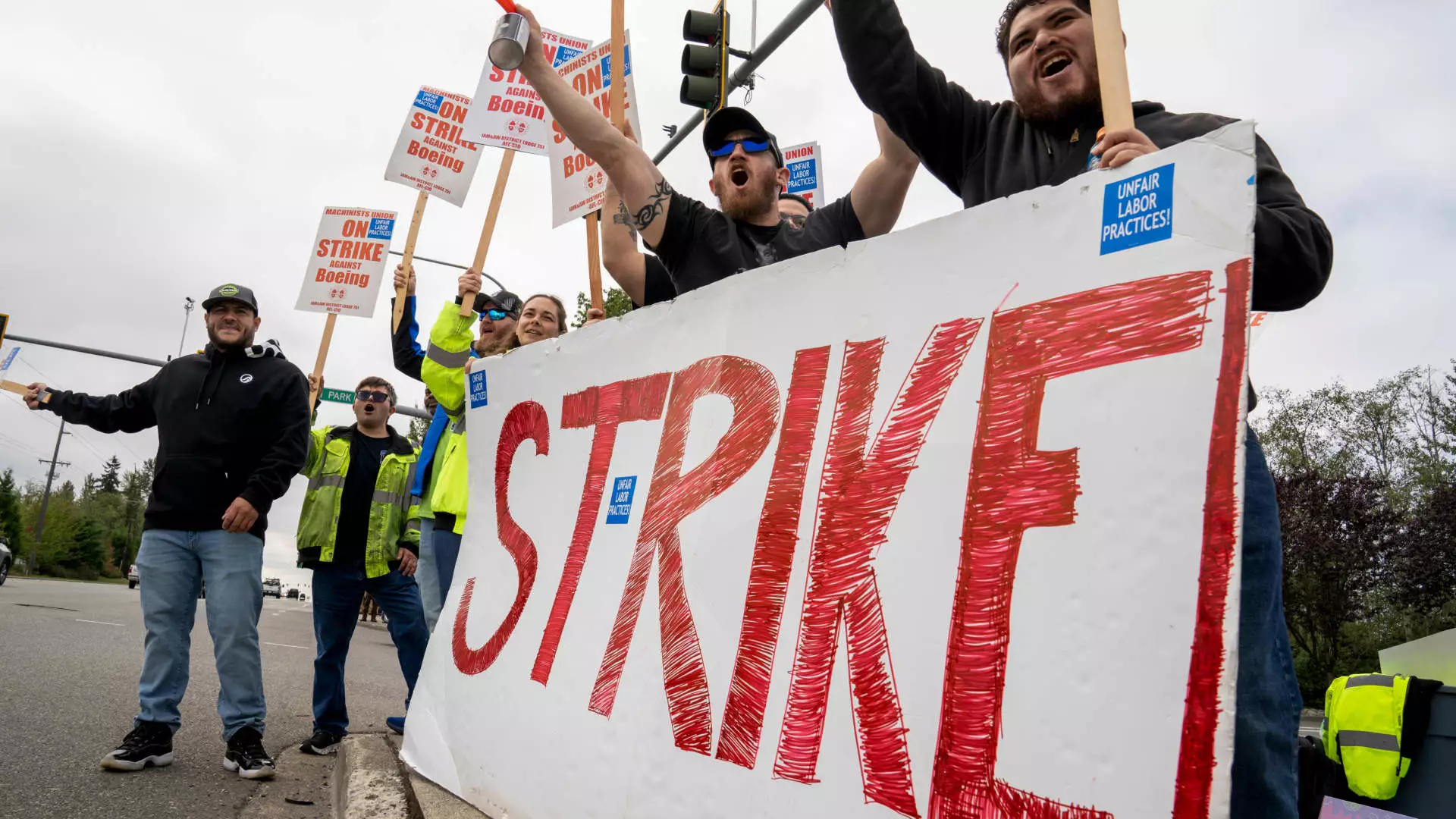In recent weeks, Boeing has found itself navigating tumultuous waters as machinists stage an impactful strike that has brought the aerospace giant’s aircraft production to a standstill. This labor action, marking the first substantial strike since 2008, has emerged from ongoing frustrations over inadequate compensation and working conditions faced by Boeing’s workforce of over 30,000 machinists. As the strike progresses into its second week, the company is under intense pressure not only from employees but also from market analysts who estimate that the labor disruption is costing Boeing an eye-watering $50 million each day.
In response to the uprising among workers, Boeing has offered what it calls its „best and final“ proposal, hoping to secure a resolution. This revamped contract includes a notable increase in general wages—ramping up to a total of 30% over four years, as opposed to the initial 25% offered. Moreover, the company has reinstated annual bonuses and doubled the ratification bonus to $6,000, which could sway many employees whose livelihoods are directly impacted by the terms of the deal. Boeing’s efforts to augment the company’s 401(k) matching contributions are additional attempts to appeal to its machinists, who are seeking compensation that aligns more closely with the rising cost of living in the Seattle area.
As Boeing puts its latest offer on the table, the International Association of Machinists and Aerospace Workers, the labor union representing the workers, has expressed cautious optimism. Union president Brian Bryant articulated that the proposal illustrates Boeing’s capacity to enhance its initial offer. However, the ultimate fate of the negotiations hinges on ratification by the looming deadline, which creates a sense of urgency for both parties. The union’s leadership is currently evaluating the proposal, which also comes in the wake of a staggering 94.6% vote against a previous contract that they had recommended, highlighting deep-seated discontent among the workforce.
On the front lines, machinists enduring the strike have expressed a blend of determination and practicality. Many have taken on side gigs to mitigate financial strain while on the picket lines. Workers have reported broad dissatisfaction with previous offers and a strong desire for their wages to reflect real-world costs, which have surged in the Seattle area. It’s evident that a significant portion of the worker base is willing to endure prolonged disruption to achieve their advocacy for wage symmetry with inflationary pressures.
With heightened vigilance from analysts and the market, Boeing’s new leadership, under CEO Kelly Ortberg, faces critical challenges. The company’s reputation and financial standing are at stake, as prolonged labor disputes risk negative consequences from credit agencies and further monetary losses. As both sides remain locked in negotiations, the coming days will be pivotal—not just for the machinists striving for a better deal, but also for Boeing’s operational viability and future growth in a volatile economic environment.


Napsat komentář